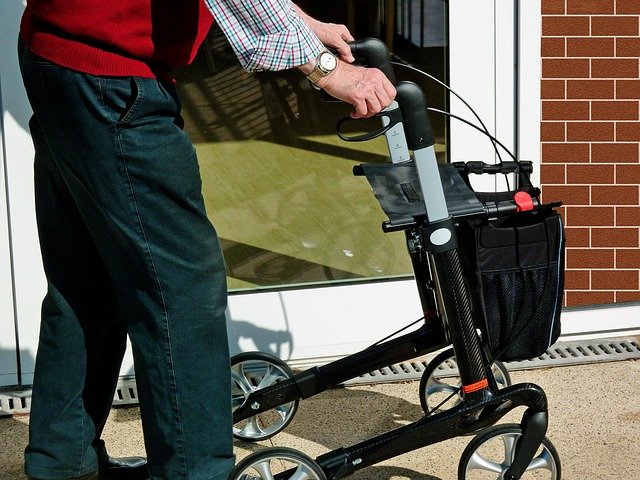Finding the Right 1 Bedroom Apartment: What to Consider for Senior Living
Choosing the right 1 bedroom apartment for senior living involves more than just square footage—it’s about balancing comfort, functionality, and peace of mind. From accessibility features and noise levels to safe kitchen layouts and community design, preferences differ widely. This overview explores what individuals often prioritize when evaluating senior housing options, whether considering private apartments or government-supported living. It also offers context on typical price ranges, eligibility considerations, and where people often turn for reliable information to support long-term planning.

Finding the right one-bedroom apartment for senior living requires careful consideration of numerous factors beyond just the monthly rent. From location and accessibility to available amenities and financial assistance programs, seniors and their families should evaluate multiple aspects to ensure the chosen living arrangement meets both current and future needs.
Understanding Senior Housing Assistance Programs
Navigating the landscape of senior housing assistance can significantly reduce financial strain during retirement. The U.S. Department of Housing and Urban Development (HUD) offers several programs specifically designed for seniors with limited income. The Housing Choice Voucher Program (Section 8) provides rental assistance that allows seniors to choose their own housing while paying only 30% of their adjusted income toward rent [1]. Additionally, some states offer supplemental assistance programs that work alongside federal initiatives to further reduce housing costs for qualifying seniors.
Key Features to Look for in Affordable Senior Apartments
When searching for affordable senior apartments, certain features become particularly important. Accessibility is paramount—look for units with wider doorways, grab bars in bathrooms, and minimal steps or thresholds. Community amenities like laundry facilities, social spaces, and transportation services can significantly enhance quality of life. Many affordable senior communities also offer emergency call systems, which provide peace of mind for residents and their families. Energy efficiency features are another consideration, as they can substantially reduce monthly utility costs, making the apartment more affordable long-term.
HUD Section 202 Eligibility Requirements
The HUD Section 202 Supportive Housing for the Elderly Program provides affordable housing with supportive services for seniors. To qualify, applicants must be at least 62 years old and have very low income, typically below 50% of the area median income [1]. The program operates through nonprofit organizations that receive capital advances from HUD to construct, rehabilitate, or acquire structures for senior housing. These organizations then receive project rental assistance contracts to cover the difference between the HUD-approved operating cost and the tenant’s contribution toward rent. The application process typically involves contacting local HUD-approved housing agencies or directly reaching out to Section 202 properties in desired locations.
Evaluating Locations for Low-Cost Retirement Living
When considering places to retire on a limited budget, several factors merit attention. Cost of living variations across regions can dramatically affect how far retirement dollars stretch. States like Arizona, Florida, and parts of the Southeast often offer lower overall living expenses. Beyond housing costs, consider healthcare accessibility, public transportation options, and proximity to essential services. Community resources like senior centers, libraries, and parks contribute significantly to quality of life without adding expenses. Climate preferences also play a role—some seniors prefer warmer climates to avoid heating costs and weather-related mobility challenges.
Health and Accessibility Considerations for Senior Apartments
The ideal senior apartment accommodates both current and potential future health needs. Single-floor living eliminates the hazards of stairs, while apartments with elevators provide necessary accessibility in multi-story buildings. Bathroom modifications like walk-in showers and raised toilet seats can prevent falls. Proximity to healthcare facilities becomes increasingly important as mobility decreases. Many senior-focused communities offer tiered care options, allowing residents to age in place even as their needs change. When touring potential apartments, evaluate doorway widths, counter heights, and overall layout with future mobility considerations in mind.
Comparing Senior Living Communities and Their Costs
Senior living options vary widely in terms of services and associated costs. Understanding these differences helps in making informed financial decisions that align with both needs and budget constraints.
| Housing Type | Average Monthly Cost | Services Typically Included | Additional Considerations |
|---|---|---|---|
| Independent Living | $1,500 - $3,500 | Maintenance, some meals, activities, transportation | Usually no medical care included |
| Subsidized Senior Housing | $300 - $800 | Basic maintenance, sometimes activities | Often has waiting lists, income restrictions |
| HUD Section 202 Housing | 30% of income | Maintenance, service coordination, some supportive services | Very limited availability, strict eligibility requirements |
| Market-Rate Senior Apartments | $1,000 - $2,500 | Maintenance, sometimes activities | No medical services, varies by location |
| Assisted Living (for comparison) | $3,500 - $6,000 | Meals, housekeeping, personal care assistance | Higher level of support than independent living |
Prices, rates, or cost estimates mentioned in this article are based on the latest available information but may change over time. Independent research is advised before making financial decisions.
The availability and cost of senior housing options vary significantly by location. Urban areas typically command higher rental rates but may offer better access to public transportation and healthcare facilities. Rural and suburban options often provide more affordable housing but might require additional transportation considerations. Many seniors find that mid-sized cities offer an optimal balance of affordability and accessibility.
Conclusion
Finding the right one-bedroom apartment for senior living involves balancing financial considerations with comfort, accessibility, and lifestyle preferences. By understanding available assistance programs like HUD Section 202, researching affordable retirement locations, and carefully evaluating apartment features, seniors can make informed decisions that support their independence and well-being. Taking time to compare options and understand eligibility requirements for financial assistance programs can result in significant savings while maintaining quality of life during retirement years.
Sources: 1. https://www.hud.gov/program_offices/housing/mfh/progdesc/eld202




